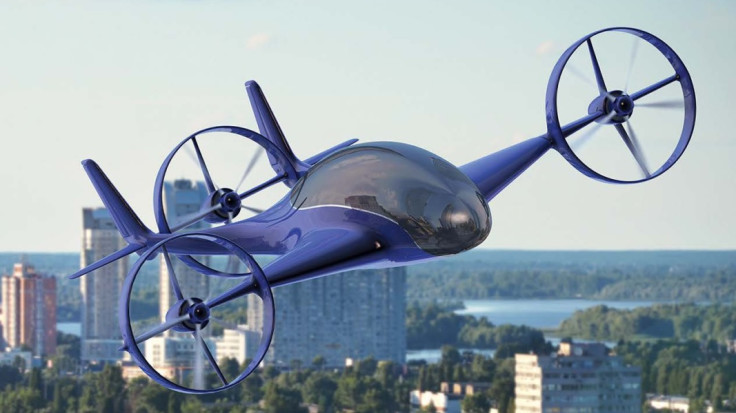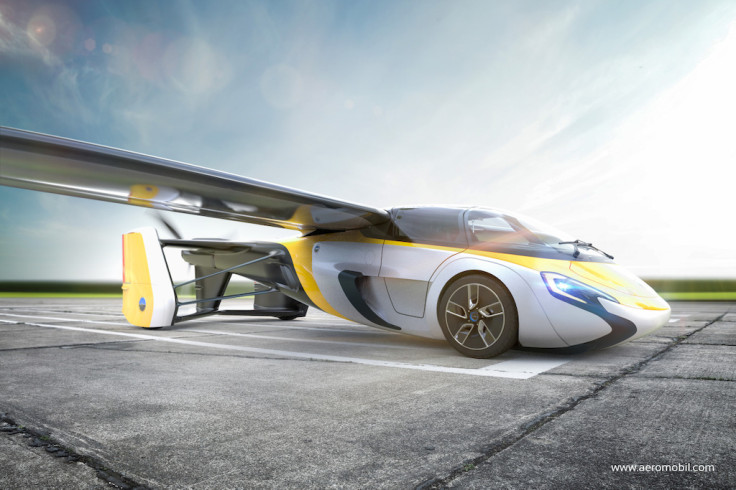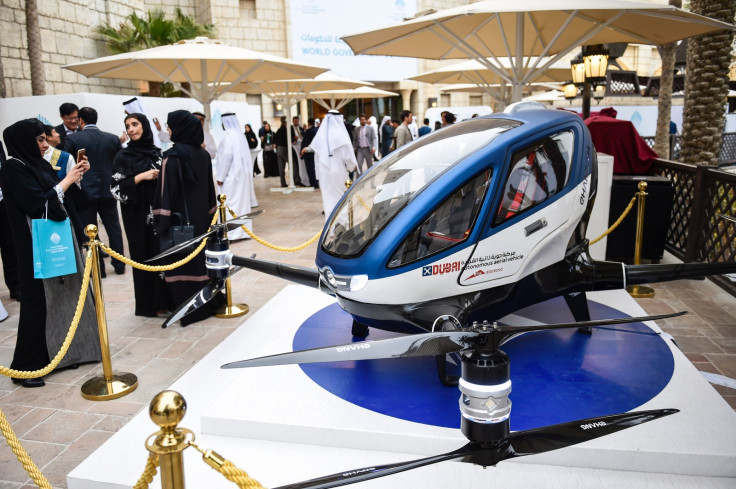Prepare for takeoff: The flying car 'gold rush' is on its way
Dubai and Singapore plan to get autonomous taxi drones off the ground sooner than you think.

Fleets of electric cars buzzing overhead will become the bread and butter of the next wave of billion-dollar 'unicorn' startups.
That is the bold claim of a new report on the flying car industry by Starburst Accelerator, the first startup accelerator dedicated to aerospace and aviation. The report predicts a "gold rush" will begin once the technology, infrastructure and legislation surrounding flying cars turns a decades-old dream into reality.
More than just rethought helicopters, these flying vehicles will be electric, quiet and eventually autonomous. A number of companies, including Uber, are already pumping millions of dollars into their development, while others tackle the need for new laws and an entire infrastructure for taking off, landing and recharging.
Despite the enormous challenges which lay ahead, our first glimpse at the future of inner-city transport is closer than many think; Dubai is to open its airspace for flying cars from July 2017, with Singapore to follow soon after.
"It is certain," the Starburst Accelerator report says, "the coming decade shall be paved by cutting-edge aerospace startups with one or several becoming the investment community's unicorns [companies worth at least $1bn (£780m)]."
Rise of the 'helicopter killer'
The report, which looks into 45 flying car ventures, goes on: "Today air taxi services are a niche market primarily due to the price of helicopters and their technological handicaps, while flying cars with their superior designs and lower price points could be considered 'helicopter killers' in the next several years." This, the startup accelerator adds, "is bound to trigger mass adoption once service providers like Uber introduce them to commuters."
On why flying cars of the near-future are more likely to be electric than use internal combustion engines, Starburst Accelerator says: "From an infrastructure perspective, access to electric charging stations at landing pads are expected to be simpler and ultimately cheaper to build and maintain than gas stations at landing pads."

What will flying cars look like?
For decades the blueprint of a futuristic flying car has been of a vehicle with folding wings, just about suitable on the road and just about capable of flight. Companies like Aeromobil have turned this dream into reality (above), but at great expense and with limited practicality; Aeromobile's first flying car will cost over £1m.
On the folding wing design, Starburst says: "The idea of a transforming car is to use the same vehicle to get to the airport and to fly with: essentially, it replaces two vehicles with one and removes the need and cost for hangar space. These savings come at a price: neither will such a vehicle be a great car, nor will it be a great plane...the concept is unlikely to gain widespread success. Today's transforming cars play in the realm of exotic cars meant for show and the occasional usage rather than of one performing a daily function."
Massive drones for carrying people - a 'natural step' forward
A more practical approach, but one dismissed when the first prototypes arrived in 2016, is to base the flying car on a consumer drone, only much larger.
"Multicopters obtained widespread popularity with consumer quadcopter toys as well as an increasing number of commercial drone solutions", Starburst says. "Extending it to passenger travel is a natural step...In addition, the use of multiple rotors (especially if more than two) is particularly suited for electric engines."

"The main strength of this technological path lies in its ability to navigate urban environments with its VTOL [vertical takeoff and landing] capabilities. As autonomous driving and electric storage technologies mature, this subcategory is the closest to achieving completely driverless aerial travel...well-suited for point to point intra-city transport."
These are the vehicles Dubai hopes to begin testing with later in 2017, and in that application would be autonomous, summoned by an Uber-style smartphone app, and managed by a remote control centre should they run into difficulty. A company keen to lead this market is China-based Ehang, which showed off a personal transportation drone at the CES technology show in January 2016. The company claims it can carry 100kg and fly for up to 23 minutes at sea level.
Starburst concludes confidently: "We are reaching an inflexion point where technology has matured sufficiently to create flying cars for mass adoption. While some pieces of the puzzle are still in flux - including new regulations, safety measures and infrastructural considerations - we are much closer to this reality than we were even just a couple of years ago."
© Copyright IBTimes 2025. All rights reserved.






















